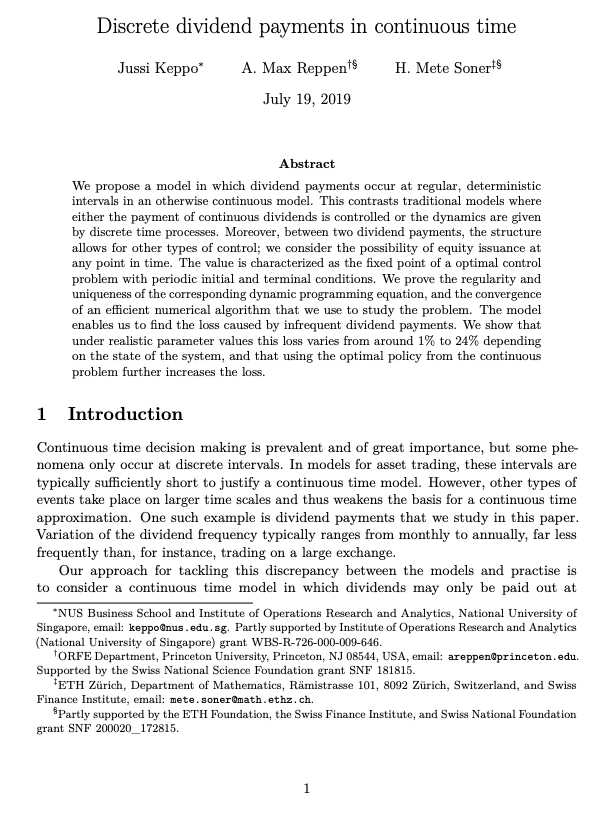We propose a model in which dividend payments occur at regular, deterministic intervals in an otherwise continuous model. This contrasts traditional models where either the payment of continuous dividends is controlled or the dynamics are given by discrete time processes. Moreover, between two dividend payments, the structure allows for other types of control; we consider the possibility of equity issuance at any point in time. The value is characterized as the fixed point of an optimal control problem with periodic initial and terminal conditions. We prove the regularity and uniqueness of the corresponding dynamic programming equation, and the convergence of an efficient numerical algorithm that we use to study the problem. The model enables us to find the loss caused by infrequent dividend payments. We show that under realistic parameter values this loss varies from around 1% to 24% depending on the state of the system, and that using the optimal policy from the continuous problem further increases the loss.

